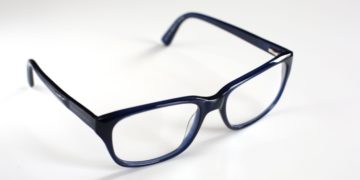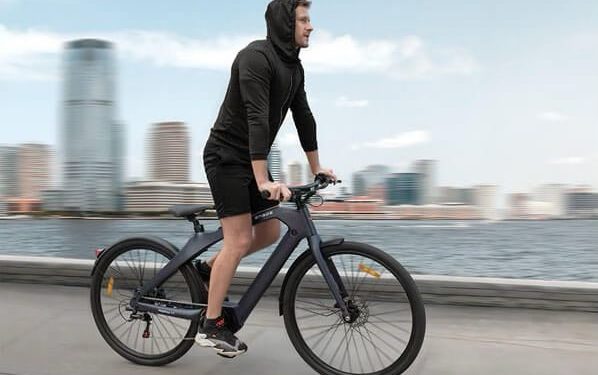Your e-bike frame choice determines your experience and performance riding by a very large degree. Motor power and battery life matter, but frame material is the key to your e-bike’s road-handling performance.
Carbon and aluminum e-bike frames are an ongoing controversy among manufacturers and riders. The choice is best determined by your riding style and preference. Custom e-bike frame offer different materials that influence performance, durability, and comfort. Understanding the differences enables you to select the right frame material for your needs.
Let’s look at carbon fiber and aluminum frames in greater detail to help you make a more informed decision.
Carbon Fiber Material Properties vs. Aluminum E-Bike Frames
Materials used for e-bike frames play an important role in the behavior of the bike. Take carbon fiber and aluminum frames – two highly desirable with various properties that create the ride experience.
Carbon fiber frames are extremely light. They only weigh 2-4 pounds, whereas aluminum frames weigh 7-15 pounds. This significant difference is due to the density of carbon fiber at 1.6 g/cm³ versus aluminum’s 2.7 g/cm³. Carbon fiber winds up being 50% lighter than aluminum for the same amount of space. The frame remains strong despite this extreme weight savings.
The strength figures are also revealing. Carbon fiber can withstand 6,000 MPa of tensile stress, while aluminum only 572 MPa. A carbon fibre component is 2-5 times stronger than an aluminium one of equal weight. This is why carbon e-bike frames are so strong despite being lighter.
These materials react differently to bumps and vibrations. Carbon fiber is a good absorber of road chatter. The rider perceives a smoother ride. Aluminum is stiffer, hence transmits more of the vibrations to the rider. This compromises comfort when riding longer on rough roads.
Thermal properties also differentiate them. Carbon fiber conducts only 40 times as much heat as aluminum and expands six times less when it is heated. Aluminum has a melting point of 660°C (1220°F), while carbon fiber does not melt even at the highest temperatures.
Maintenance and durability are where the compromises become apparent. Aluminum frames take a beating more easily than carbon. Carbon carries a possibility of silent internal crack formation. For example, the ENGWE MapFour series of electric bicycles have a very light carbon fiber frame, making them suitable for daily commuting.
Aluminum frames are less expensive and easier to repair. That makes them perfect for cyclists who value sturdiness and pragmatism over top-level performance.
Both materials possess virtues that are well-suited to different disciplines of riding and requirements of e-bike frame design.
Performance Measures in Actual Riding Conditions
Weight plays a big role in controlling an e-bike. Carbon fiber frames are extremely light, at 2-4 pounds. This makes the whole e-bike lighter and faster to accelerate. Aluminum frames weigh between 7-15 pounds. They work too, but you’ll need to push harder to pick up speed or climb hills.
The strength-to-weight ratio plays a big role in how they feel. Carbon fiber’s strength enables it to be great at transferring your pedaling power. You’ll notice right away – carbon e-bikes respond much more quickly than aluminum ones when you hit the pedals.
These materials soak up bumps in different ways too. Carbon fiber soaks up road shock. It filters out all of those little bumps that will make your ride nasty. Aluminum frames are stiffer and let you feel more of the road. This extra feedback can tire you out on long rides over bumpy roads.
Weight has a big influence on how efficiently these bikes save energy. Carbon frames put less strain on motors and batteries because they’re lighter. That means longer rides and better efficiency. The weight advantage really comes into play on tough terrain with high resistance.
Real-world durability is very telling. Aluminum frames are more resistant to impact. They’re ideal if you’re riding huge trails or might have a couple of crashes. Carbon frames are incredibly strong under normal use, but big impacts will create what are referred to as “hidden cracks” inside the frame.
Temperature variations matter, too. Carbon fiber acts identically under any weather conditions. Aluminum frames will be slightly different with varying temperatures, affecting the way they flex and absorb vibrations.
Carbon frames perform well with challenging rides like steep hills or technical downhills. They are stiff and light, giving precise control. Aluminum frames do not react at once, yet the predictability on different terrains satisfies the majority of bicyclists.
If you’re interested in carbon fiber frames, then you might want to consider the ENGWE MapFour N1 Pro and MapFour N1 Air.
Custom E-Bike Frame Design Considerations
Individualized e-bike frame design necessitates an understanding of a compromise between technical detail and personal taste. Custom frames go beyond standard models to provide bespoke solutions for particular riding needs and component integration.
The proper selection of material is the secret to any specialty e-bike frame design. Aluminum remains popular because it can strike a balance between weight, cost, and ride quality. Dozens of additional materials are being used in custom work these days. Carbon fiber provides additional design freedom with smooth curves and sweeping lines previously unattainable. Titanium is an excellent choice for top-of-the-line custom bikes because it combines lightness with robustness, but at a much greater expense.
E-bike frames need special engineering to support the extra weight and hardware required for electric power. Smooth integration of batteries, motors, and control systems into the frame provides maximum performance and looks. Huge emphasis is placed by manufacturers on designs that work perfectly while keeping clean appearances.
Custom frame manufacturing has come a long way. The majority of builders still prefer traditional handcrafting with steel or titanium. Innovative methods like water-assisted injection molding with carbon fiber reinforced thermoplastics provide exciting possibilities. V-Frames led the way with this revolutionary process that creates frames in 90 seconds and lowers carbon footprint by 68% compared to conventional methods.
Frame geometry and frame design should conform to the specific requirements of every user. A few custom e-bikes also have step-through frames that become easier to mount and dismount, particularly in case you suffer from mobility problems. The designing process should ensure proper planning regarding mounting points of batteries, motors, and accessories.
Custom frames are always a trade-off between frame and component quality. An expensive frame material usually means sacrificing electrical components in a given budget. Designers therefore have to make choices based on the rider’s specific needs and intended use.
Conclusion
The proper frame material is a key part of your e-bike experience. Our detailed examination shows how carbon fiber and aluminum frames provide unique benefits for different riding styles.
Carbon fiber frames are the winner with their amazing strength-to-weight ratio. They dampen vibrations better and have better heat characteristics. Performance riders who require efficiency and comfort on long rides will love these frames. Aluminum frames are heavier but give riders a budget-friendly option. They are strong, can absorb impacts, and are longer-lasting.
Ground testing shows that carbon frames allow you to accelerate faster and transfer power better. That comes in useful when you are climbing hills or carving technical trails. Aluminum frames give you stable handling and better absorb impacts and are best suited to rough trails and everyday riding.
Frame design has come a long way. New technologies like water-assisted injection molding bring new revolutionary possibilities for both materials. These developments allow constructors to create specialized designs that better fit electrical components without compromising the frame.
Whether to use carbon fiber or aluminum is up to what matters most to you – performance, durability, or cost. Both materials improve with each new technology, so future riders will have even better quality e-bike frames to choose from.











































































